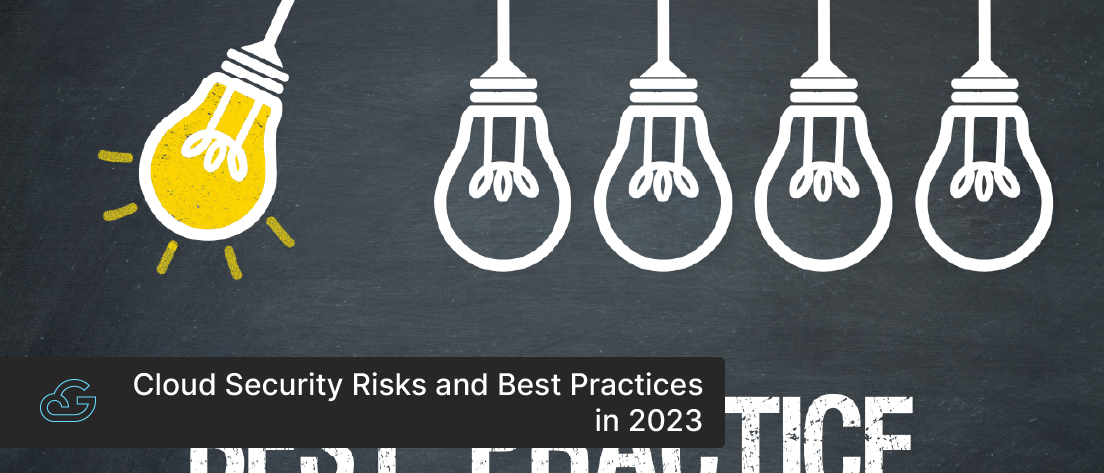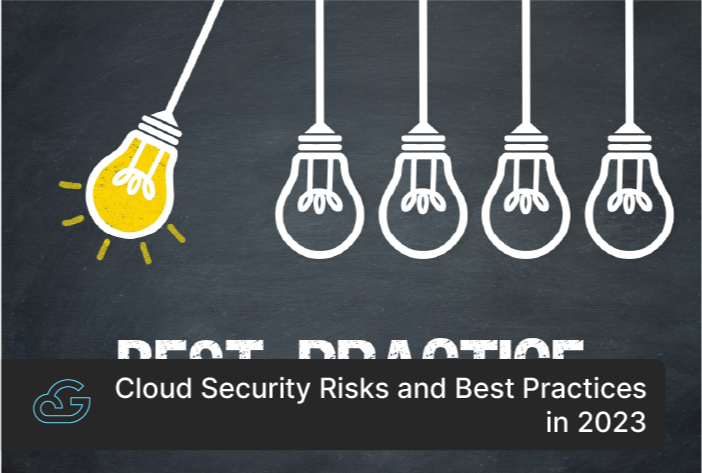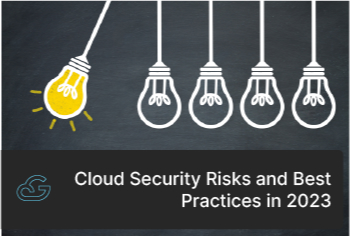Blogs / Security and Compliances
Cloud Security Risks And Best Practices In 2023
By
Harish K K
Posted: May 10, 2023
• 4 Min Read
Cloud computing has become a popular solution for businesses seeking to improve efficiency and streamline workloads. However, it is crucial to be aware of the hazards and security risks associated with cloud computing to avoid potential failure. Ignorance of the risks involved in implementing cloud technology or the wrong choice of the cloud service provider can expose your organization to a range of hazards including business, financial, technical, legal, and compliance. All of these will create a significant impact on your business's reputation and financial performance.
6 Major Cloud Security Risks
Let’s have a look at some of the security risks associated with cloud computing.
- Data Breaches
- Insider Threats
- Misconfiguration
- Lack of Control
- Inefficient Cloud Strategy
- Data Loss
Data sharing in the cloud is convenient but can compromise cloud security. Since your data is stored on remote servers outside of a company's direct control, hackers can gain access to sensitive data by exploiting vulnerabilities in the cloud service provider's security. Especially, in link-based sharing, controlling access to shared resources becomes challenging. Cybercriminals can easily guess or steal the shared link, giving unauthorized access to the shared resource to others.
Cloud service providers often have multiple users sharing the same infrastructure. This can increase the risk of insider threats, such as employees or contractors who abuse their access to sensitive data. Partnership contracts typically impose restrictions on shared data usage, storage, and authorized access. If your employees move restricted data into a cloud service without authorization, it may result in a breach of contract and legal action.
With the increasing range and complexity of services, misconfigured cloud resources such as servers or storage can lead to data exposure, manipulation, and unauthorized access. Common causes of misconfiguration include using default security and access management settings for highly sensitive data, granting unauthorized access due to mismatched access management, and leaving confidential data open without proper authorization.
Even though entrusting your data and infrastructure to a third-party provider offers numerous benefits, your organization relinquishes some physical control over the data and infrastructure. This makes it challenging to ensure compliance with regulatory requirements. If your cloud provider is in a different jurisdiction or operates under different regulatory frameworks, this makes it difficult to know where exactly the data is stored and who has access to it.
Many organizations overlook a critical aspect of cloud migration i.e., the security risks associated with the hasty and incomplete implementation of security systems and strategies. Rushing to move systems and data to the cloud without ensuring adequate security measures can lead to potential security breaches and prolonged downtime.
When you store your data on a cloud computing service, you rely on the service provider's infrastructure to keep the data safe and available. If the provider experiences an outage or system failure, the data may become inaccessible, or worse, lost entirely. Additionally, if the provider's storage systems are not designed to handle high volumes of data, your data may become corrupted or lost due to system failures.
How to mitigate the security risks?
Risk management has always been a crucial component of cloud security to protect your organization against potential risks. However, how can you identify when a new risk emerges and stay abreast of it in a rapidly changing cloud environment with more endpoints to monitor?
At this point, having an understanding of the security best practices to achieve secure cloud computing is essential.
Important Cloud Security Best Practices For 2023
Encryption
-
Use strong encryption methods to protect sensitive data both in transit and at rest.
-
Encrypt data in transit and at rest to protect it from unauthorized access.
-
Use strong encryption algorithms and keep your encryption keys secure.
Access Control
-
Limit access to cloud resources through Role-Based Access Control (RBAC), Discretionary Access Control (DAC), Attribute-Based Access Control (ABAC), and Mandatory Access Control (MAC).
-
Implement multi-factor authentication using strong passwords, pins, security tokens, and biometric scans to ensure that only authorized personnel can access your cloud resources.
Configuration Management
-
Develop a Configuration Management including the scope of the management process, who will be responsible for it, and the tools and technologies that will be used.
-
Automate configuration management process through tool adoption to monitor configuration and prevent misconfigurations that can lead to data exposure or unauthorized access.
-
Conduct Periodic Configuration Audits to identify vulnerabilities or misconfigurations that may have been missed during regular monitoring.
-
Establish Configuration Standards by defining the baseline configurations and settings for all systems and applications running in the cloud environment. This helps you ensure that all configurations are consistent and secure.
Compliance Monitoring
-
Use Security Information and Event Management (SIEM) tools, and log analysis tools to monitor cloud resources and unusual activities while ensuring compliance with regulatory requirements.
-
Due diligence on the provider's security and compliance capabilities, including their certifications, data protection policies, and incident response procedures.
-
Negotiate appropriate service level agreements (SLAs) that define the provider's responsibilities for compliance and data protection.
Disaster Recovery
-
Implement a disaster recovery plan that includes data backup and restoration procedures.
-
Conduct regular data backups and store it in multiple locations, such as on-premises and in the cloud.
-
Testing disaster recovery procedures regularly to minimize the impact of a security incident.
-
Go with a reputable cloud provider who has a proven track record of reliability and strong backup and recovery services.
Maintenance and Updates
-
Conduct regular security assessments and penetration testing to identify and remediate vulnerabilities.
-
Keep your software, including operating systems, applications, and security tools, up-to-date with the latest security patches and updates.
Training
-
Train and educate your team, stakeholders, and administrators on cloud security best practices and how to identify and respond to suspicious activity.
-
Include basic cybersecurity concepts in training such as password hygiene, identifying phishing emails, and the risks of insecure practices such as downloading unverified software or using public Wi-Fi networks.
-
Provide industry-specific training and certifications to cloud administrators or security professionals.
Bottom Line
When moving to the cloud, it's crucial to have a robust cloud security strategy in place from the outset. This involves selecting the right cloud service provider and then implementing a comprehensive approach that incorporates the right tools, processes, policies, and best practices. Many cloud providers offer advanced security hardware and software that can enhance your overall security posture. However, it's crucial to remember that cloud security is a shared responsibility, and you must play your part in ensuring your data and applications remain secure in the cloud.
Consult with our cloud security experts if you need further guidance on implementing your cloud security strategies. They can provide you with in-depth insights and recommendations tailored to your specific business needs and requirements. Contact us today to learn more about our cloud services.


Get Know More About Our Services and Products
Reach to us if you have any queries on any of our products or Services.











